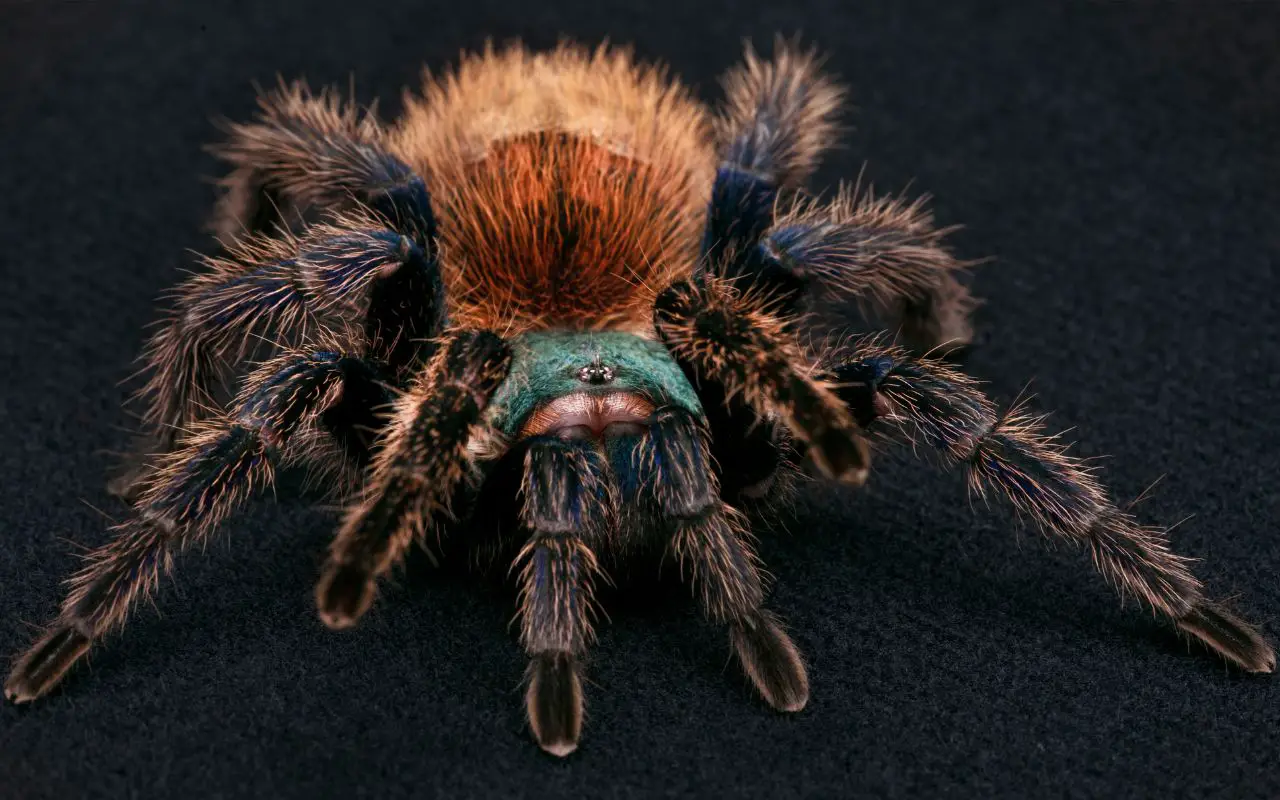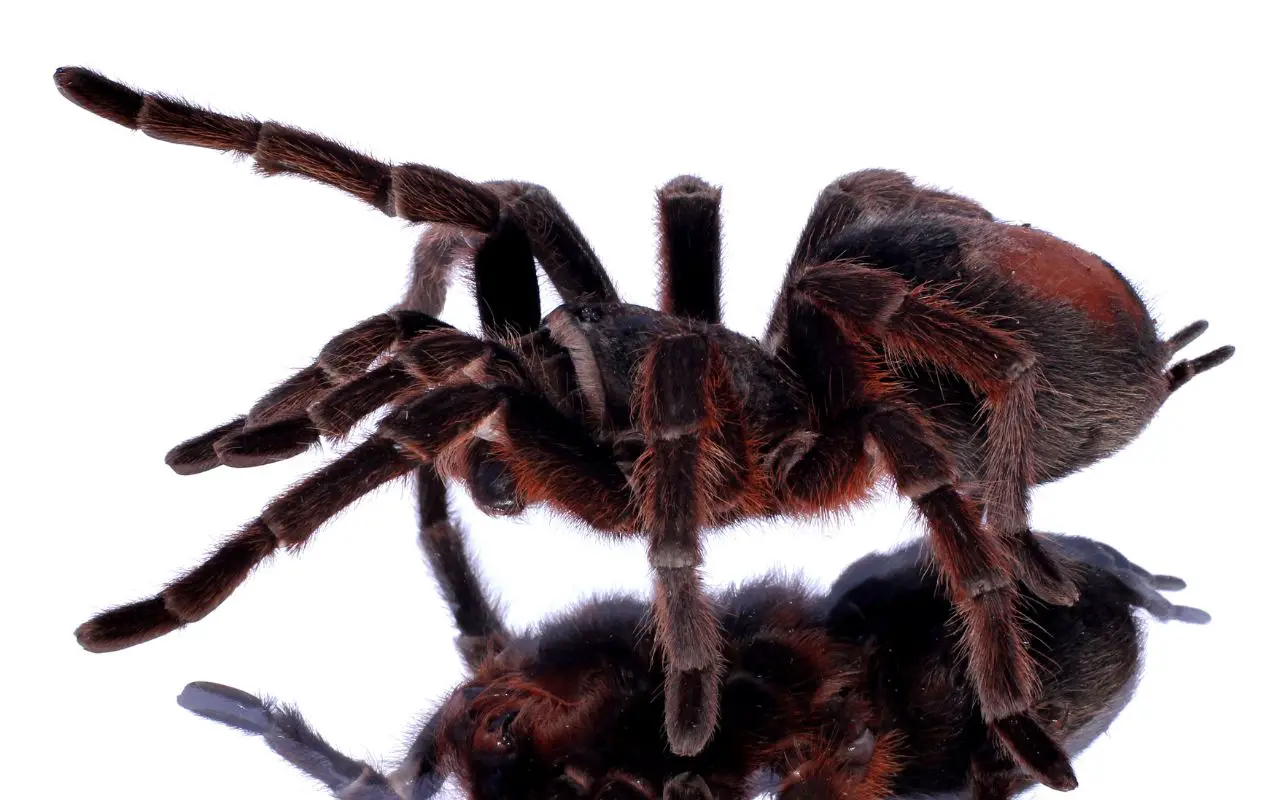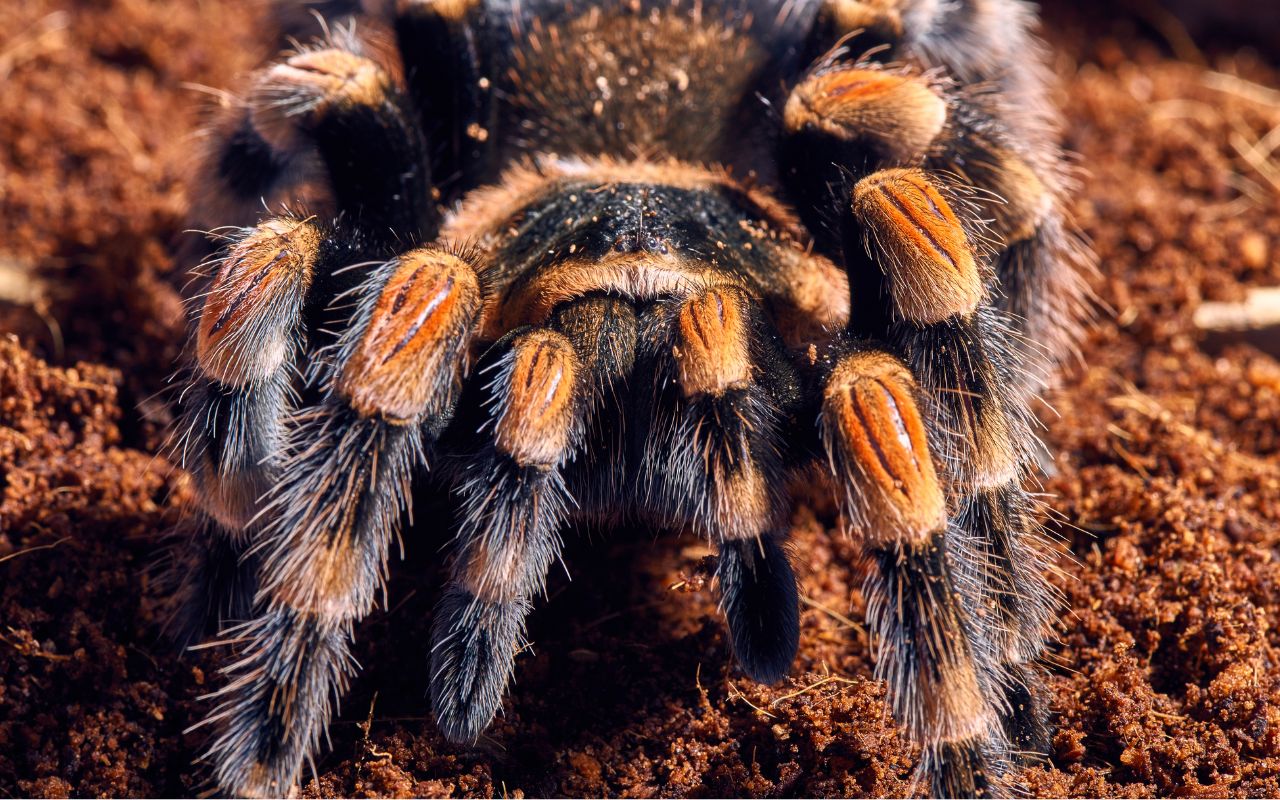Last updated on May 17th, 2023 at 10:13 am
The Gooty Saphire (Poecilotheria metallica) is a big, beautiful Tarantula that commands respect. Though it is a display animal rather than a pet, it is definitely worth having one…
Time to learn about Gooty Saphire Tarantule care. Here, you’ll learn about temperature, enclosure, and habitat. Plus, you’ll learn the differences between a male and a female. Whether you choose a female or male Gooty Saphire tarantula is a personal choice. The following tips and advice can make a world of difference in the care and maintenance of your spider.
Gooty sapphire tarantula temperature
While Gooty Sapphire tarantulas are considered to be easy-care species, you should take note of their temperature needs. Generally, the ideal temperature for your pet is around 70-80 °F. This temperature can fluctuat a tad, so long as you don’t ever let them overheat, or get below 65 °F.
Be aware that they are a tropical species, and excessive heat from a heat lamp or similar appliance would probably dry them to the point of dying.
If your pet lives in a warm climate, he or she will need to be kept in an enclosure with a little humidity. To provide a humid environment, try using coco coir substrate or plants, like sphagnum moss, in your enclosure. Another thing to keep in mind is the ventilation in your Gooty’s enclosure. You can make this happen by adding ventilation holes, especially in the juvenile enclosure.
Gooty sapphire tarantula habitat
Choosing the proper habitat is important for a Gooty Sapphire Ornamental tarantula. This species is primarily arboreal, so its enclosure must be large and vertical. It needs a good ventilation system and relatively high humidity.
A modified aquarium with screened sides and a top will work best for this species. This species should be housed at a temperature between 70 and 80 degrees Fahrenheit. Keep in mind that it will not survive in very high temperatures, so you’ll want to avoid using a heater or air conditioner in this environment.
As with most other species, a Gooty Sapphire needs a healthy habitat to survive. In its habitat, it will feed on insects that are smaller than its abdomen. Its young will eat pinhead crickets and fruit flies. In the wild, it will eat roaches, wax worms, and reptiworms. While it may be easy to find insects to feed it at home, the Gooty Sapphire needs a place to live, so you can provide it with a safe, natural habitat that will provide plenty of food.
Enclosure
A large enough tarantula enclosure is critical for this species. While they can grow to large sizes, a smaller enclosure is sufficient for a single pet. Their habit of staying stationary conserves energy. A 5-gallon tank should suffice, and you’ll want to consider the height of the enclosure as well. The enclosure should be tall enough for your tarantula to comfortably hide vertically.
The best way to maintain the proper temperature for your Gooty Sapphire Tarantula is to provide it with a standard humidity level. Room temperature is suitable for the Gooty Sapphire Ornamental, but if you live in an area with very cold winters, it’s a good idea to use a thermometer to monitor the climate inside your enclosure.
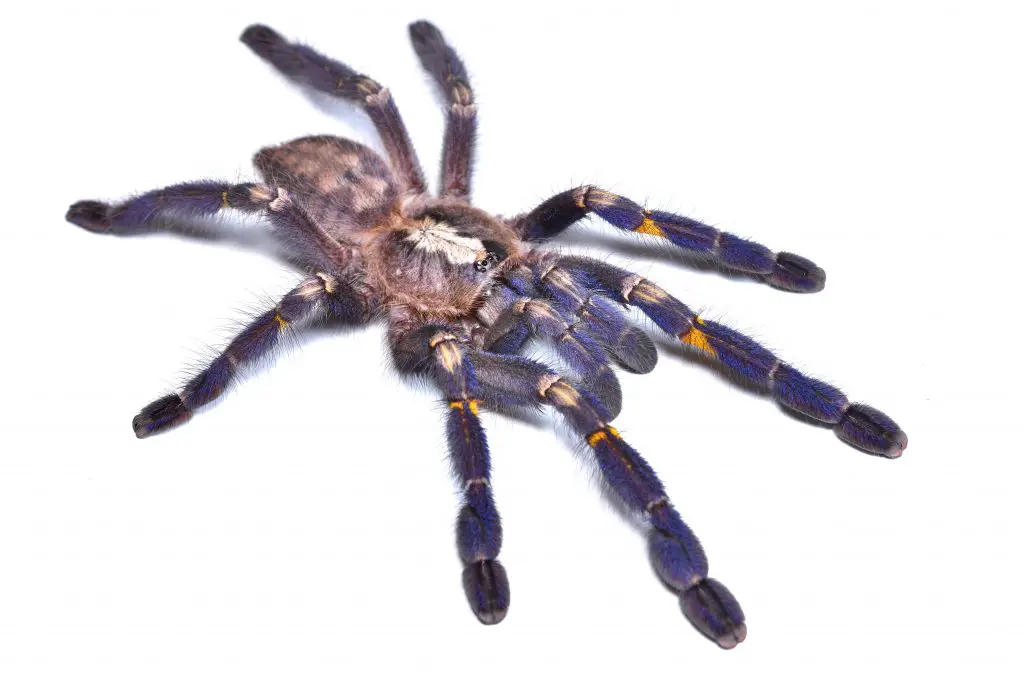
Gooty sapphire tarantula male vs female
When it comes to the Gooty Sapphire tarantula, males are (according to some) slightly smaller than females, while the latter tend to be less brightly colored. Interestingly, both species are venomous, so you can’t choose a sex that will be more or less handleable. It’s important to know what to expect before purchasing one, because you’ll probably have many questions!
The Gooty Sapphire tarantula is a species of Old World arboreal tarantula native to India. Its metallic blue coloration is striking, especially when it’s mature. While both sexes are equally beautiful, males are typically more vibrantly colored than females. Females live up to 15 years while males live only three to four years.
Water and humidity
When caring for a Gooty Sapphire tarantula, you’ll want to keep its humidity and temperature in check. A large shallow water bowl on the floor of the enclosure will help maintain the right humidity levels. A good substrate should also hold a significant amount of humidity, and sphagnum moss can help keep humidity in check.
Just remember to put sponge or pebbles in the water dish. Tarantulas are notoriously clumsy and may drown themselves.
If you’re planning on keeping a Gooty Saphire tarantula as a pet, make sure it has plenty of vertical climbing space and a complete diet.
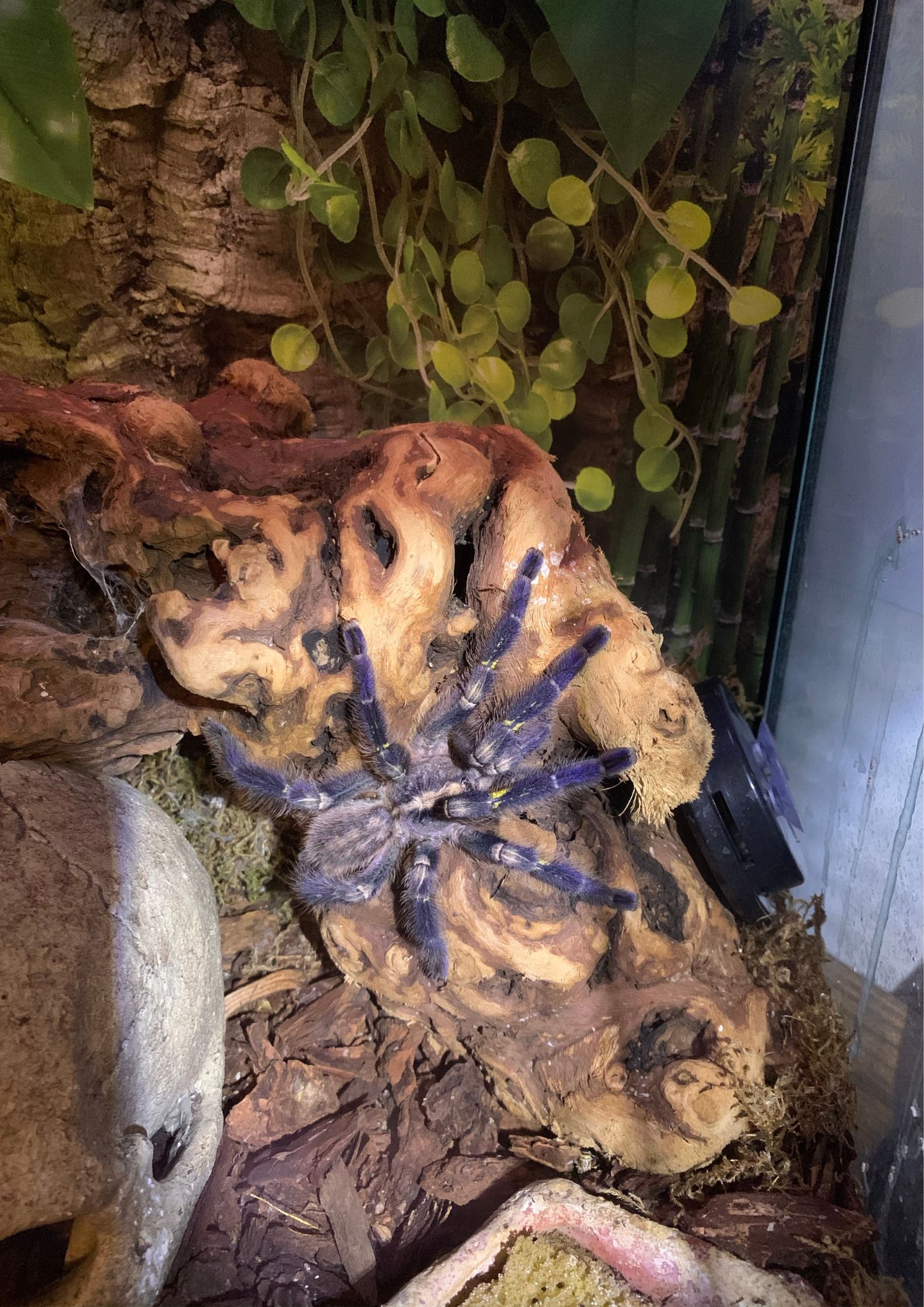
Gooty sapphire tarantula lifespan
The Gooty sapphire tarentula is known for its brilliant metallic blue coloration and fractal pattern on its abdomen. The species has long legs, ranging up to 6 inches long, and can move at an incredible speed. This species also exhibits sexual dimorphism with females generally living four to five times longer than males. Here are some facts about the Gooty sapphire tarantula lifespan:
The male Gooty sapphire tarentula lifespan is approximately four to six years. The female lives up to 12 years.
The Gooty sapphire tarentula is capable of fast growth and a healthy appetite.
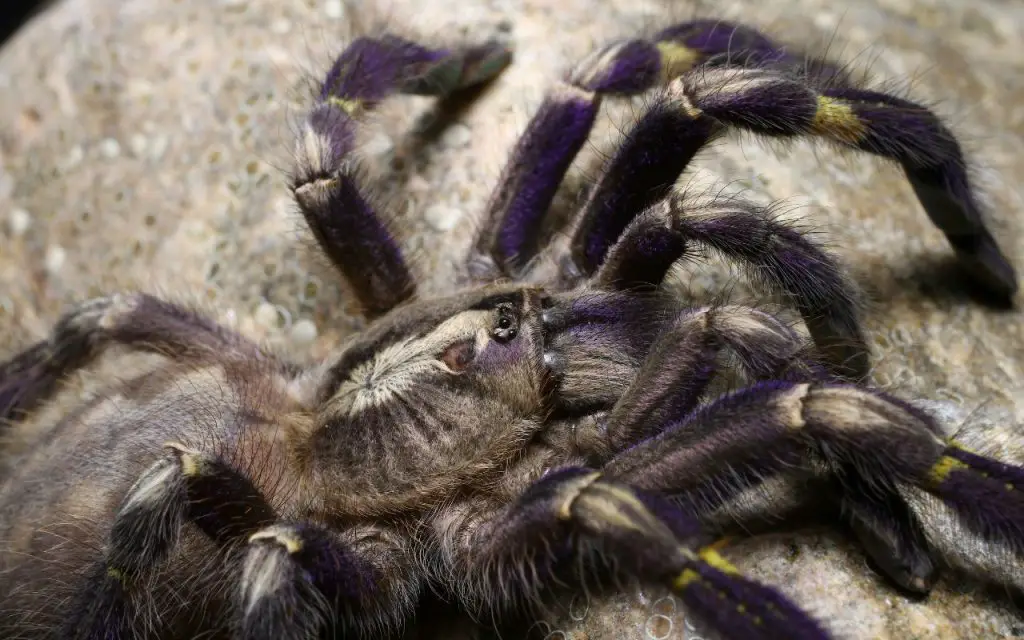
Gooty sapphire tarantula for sale
If you’re looking for a new tarantula, then you’ve probably noticed the many listings for Gooty sapphire tarants for sale. They are small, but beautiful, and have become a favourite in the hobby. They also live in communal settings, so you can expect to see them in groups of several.
The Gooty Sapphire Tarantula is a highly prized species of tarantula. As such, it is generally more expensive than species like Grammastola pulchra (the Brazilian Black). Spiderlings may still cost as much as $100, and adults even more.
It is an Old World species that has blue legs with yellow coloring beneath the femur. The body is blue with a gun-metal gray carapace. It is a great addition to any collection, but it is not for the beginner. These tarantulas are extremely fast, so be prepared for a frightening tiime moving them or cleaning their enclosures!
Its wild habitat is deciduous forests in Andhra Pradesh, central southern India. This species is considered Critically Endangered by the IUCN.
Gooty sapphire tarantula bite
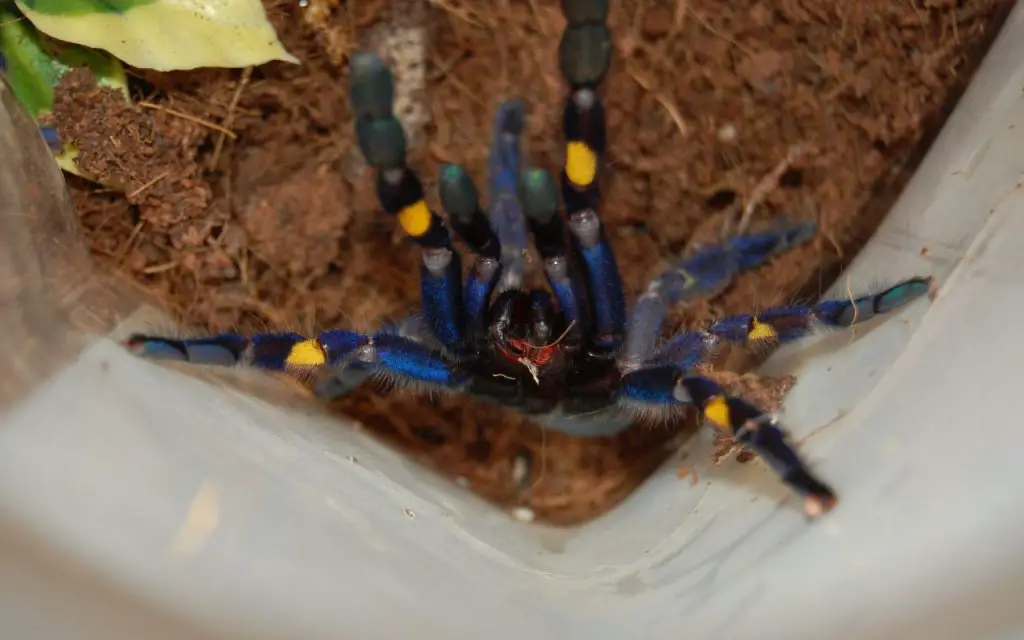
It’s important to understand the proper Gooty Sapphire tarantula bite care. The first thing to know is that Gooty Sapphire spiders are not sluggish creatures and are actually quite fast. They only feed on small insects and other small animals, but you must be careful when handling them.
This species is known to bite humans with an intense bite and leave them in agonizing pain for up to a week. Most keepers say it’s possibly even more painful than the bite from a Cobalt Blue.
Since Gooty Sapphire tarantulas are not considered friendly species, you need to be very careful with them and take the necessary precautions. It’s not recommended to handle the tarantula, and even professional breeders do not handle them. This species is not a good pet for beginners and you should not handle it unless you’re an experienced expert.
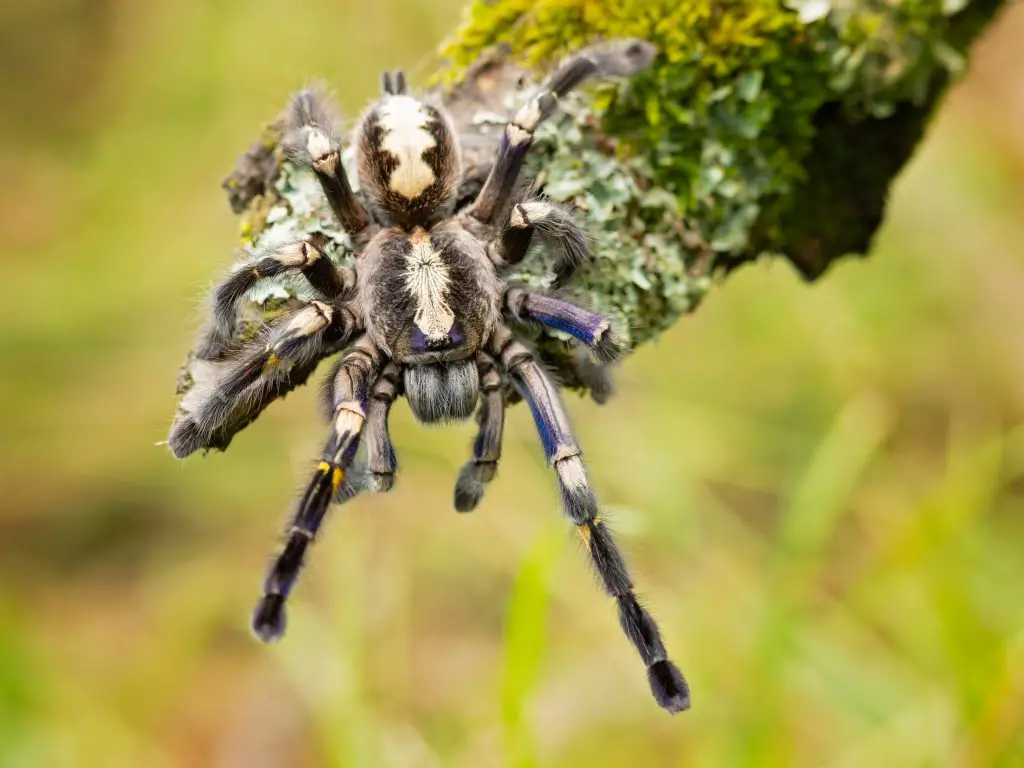
Gooty Saphire Tarantula FAQ:
What do you feed a gooty Sapphire tarantula?
The Gooty Sapphire is a species that can live in a communal habitat. This means it can live with other GSTs without becoming aggressive or cannibalistic. There are approximately 800 species of true tarantulas, and this species is a member of this group. For optimal health, choose a habitat that has plants that climb and a bark hide that is not prone to dampness or bacterial growth.
When it comes to feeding, GSTs do fine on a diet of crickets. Feed young tarantulas pinhead crickets, and adults fully grown crickets. You should only put in two or three at a time, once or twice a week.
If you’d like to feed other prey, safe items include:
- hornworms
- flightless fruite flies (for spiderlings)
- locusts (for adult spiders)
- mealworms
- super worms
How big do gooty sapphire tarantulas get?
If you’ve ever wondered how big a Gooty Sapphire tarantula gets, the answer is quite impressive: six inches. Males are slightly smaller and have slightly thinner legs than females. The Gooty is a long-lived but fast-growing species – it will reach maturity at six inches.
The Gooty Sapphire tarantula is named after the town where it was discovered, Gooty, India. This species of tarantula is blue and is the only species in its genus with such bright coloring.
How often do P. metallica molt?
The mature Poecilotheria Metallica molts in June, when the southwest monsoon begins. The monsoon, which brings moist air masses from the Indian Ocean, continues until the end of September. After molting, these blue spiders begin to reproduce. During this time, mating is relatively peaceful, with the female weaving a cocoon and depositing one hundred to 150 eggs. The eggs hatch in February and the larvae continue to display cannibalism until the beginning of July.


